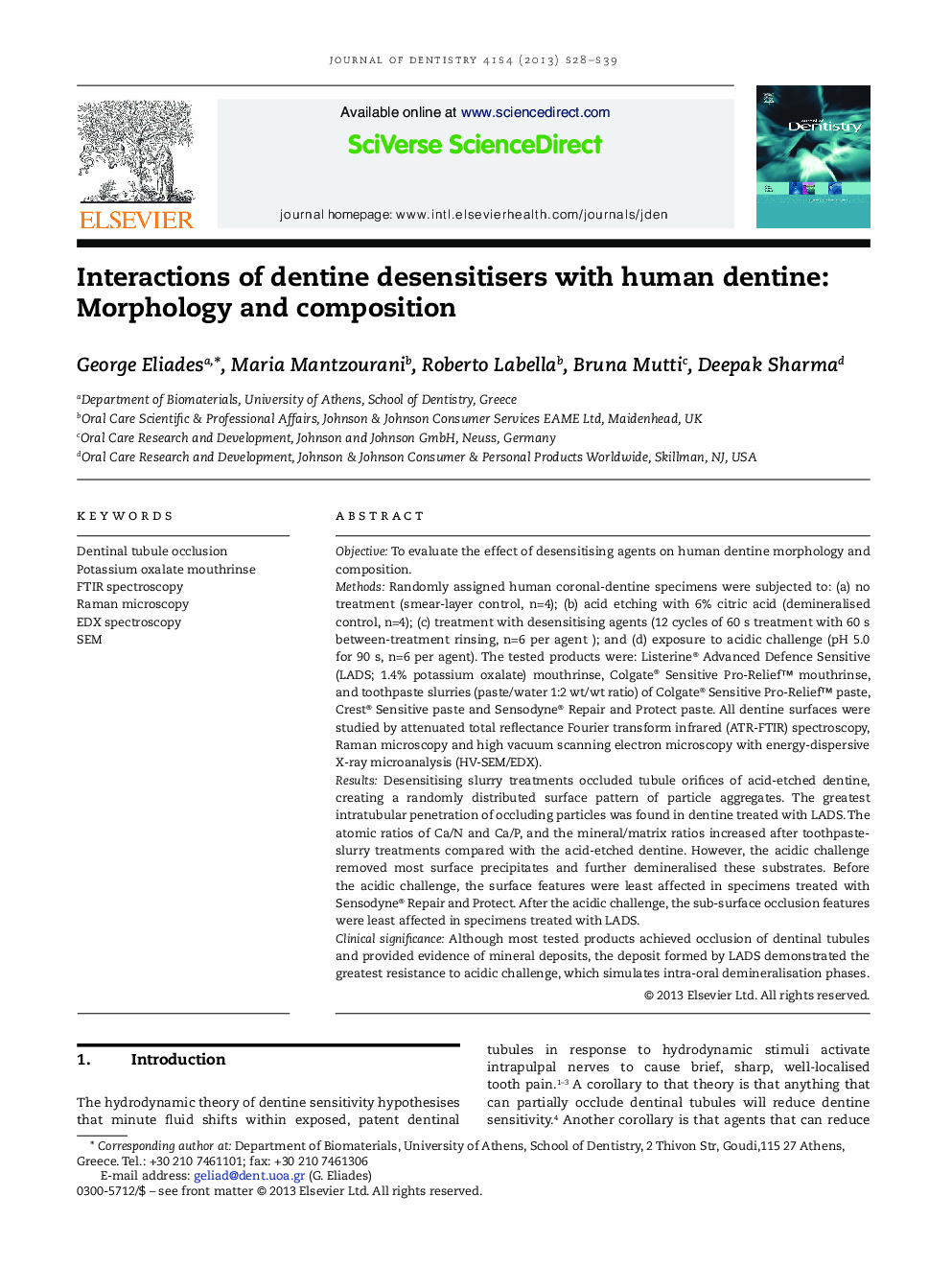| کد مقاله | کد نشریه | سال انتشار | مقاله انگلیسی | نسخه تمام متن |
|---|---|---|---|---|
| 3146278 | 1197191 | 2013 | 12 صفحه PDF | دانلود رایگان |

ObjectiveTo evaluate the effect of desensitising agents on human dentine morphology and composition.MethodsRandomly assigned human coronal-dentine specimens were subjected to: (a) no treatment (smear-layer control, n=4); (b) acid etching with 6% citric acid (demineralised control, n=4); (c) treatment with desensitising agents (12 cycles of 60 s treatment with 60 s between-treatment rinsing, n=6 per agent); and (d) exposure to acidic challenge (pH 5.0 for 90 s, n=6 per agent). The tested products were: Listerine® Advanced Defence Sensitive (LADS; 1.4% potassium oxalate) mouthrinse, Colgate® Sensitive Pro-Relief™ mouthrinse, and toothpaste slurries (paste/water 1:2 wt/wt ratio) of Colgate® Sensitive Pro-Relief™ paste, Crest® Sensitive paste and Sensodyne® Repair and Protect paste. All dentine surfaces were studied by attenuated total reflectance Fourier transform infrared (ATR-FTIR) spectroscopy, Raman microscopy and high vacuum scanning electron microscopy with energy-dispersive X-ray microanalysis (HV-SEM/EDX).ResultsDesensitising slurry treatments occluded tubule orifices of acid-etched dentine, creating a randomly distributed surface pattern of particle aggregates. The greatest intratubular penetration of occluding particles was found in dentine treated with LADS. The atomic ratios of Ca/N and Ca/P, and the mineral/matrix ratios increased after toothpaste-slurry treatments compared with the acid-etched dentine. However, the acidic challenge removed most surface precipitates and further demineralised these substrates. Before the acidic challenge, the surface features were least affected in specimens treated with Sensodyne® Repair and Protect. After the acidic challenge, the sub-surface occlusion features were least affected in specimens treated with LADS.Clinical significanceAlthough most tested products achieved occlusion of dentinal tubules and provided evidence of mineral deposits, the deposit formed by LADS demonstrated the greatest resistance to acidic challenge, which simulates intra-oral demineralisation phases.
Journal: Journal of Dentistry - Volume 41, Supplement 4, July 2013, Pages S28–S39